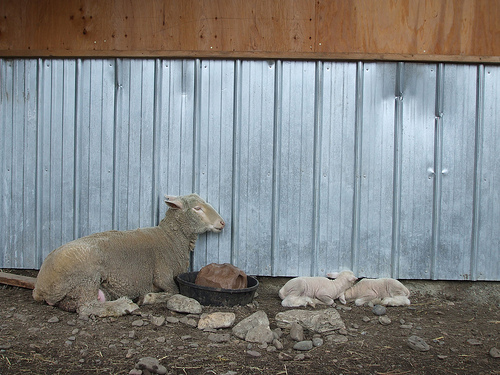Better know a fiber: Rambouillet

This French breed began its history in 1786 when Louis XVI purchased a flock of Merino sheep from his cousin, who happened to be the king of Spain at the time. The legendary Merino was a closely-guarded breed, and the French monarchy held the Rambouillet in similarly clandestine regard. They developed the breed on a special experimental royal farm, located in the Domaine Rambouillet (from which the breed takes its name).
Starting with the Merino stock, the Rambouillet was then bred with English longwool breeds to create a larger sheep (Rambouillet range from 200-300 pounds) which produces a correspondingly larger fleece. They were also bred to have a longer length of wool, with a staple length of over three inches. This sturdy breed is also excellent as a dual-purpose sheep for meat, and its flexibility in that regard is part of why it is the most common sheep breed in America, with over 50 percent of American sheep being Rambouillets.
For a spinner, Rambouillet is comparable to Merino in being a fine wool with a long staple length. Although the staple length of Rambouillet is much longer than Merino, with fibers up to twice as long as the Merino's already remarkable staple length. Because of these characteristics, Rambouillet makes an excellent fiber for handspinners, both beginning and advanced.
Although Merino tends to steal the spotlight as everyone's favorite go-to wool fiber, Rambouillet definitely deserves to be appreciated by handspinners as well. With a bit of searching you can easily find prepared Rambouillet fiber, either 100 percent Rambouillet or mixed with fiber from another breed for strength.
When Rambouillet is blended with a more durable wool fiber, it helps balance out the down side to very fine, low-micron fibers like Rambouillet and Merino. Due to the fibers being so fine, they are easily abraded and worn through with use, which can translate to pilling in the final garment.
Image of Rambouillet ewe with her two lambs courtesy Flickr/knitting iris

0 comments